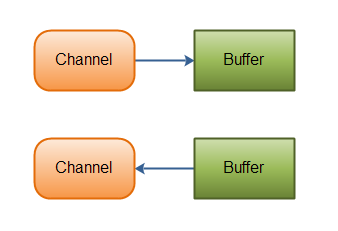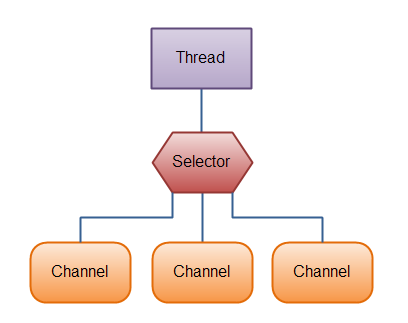标签:
发现了一个很好的学习Java的外国网站,英语都是很简单的啦,看英语舒服些,关于NIO的系列就直接参照此网站了,而且是英语的!
Java NIO (New IO,也有人叫非阻塞IO) is an alternative IO API for Java (from Java 1.4), meaning alternative to the standard Java IO and Java Networking API‘s. Java NIO offers a different way of working with IO than the standard IO API‘s.
Java NIO: Channels and Buffers
In the standard IO API you work with byte streams and character streams(面向的是字节流和字符流). In NIO you work with channels and buffers(面向的是通道和缓冲区). Data is always read from a channel into a buffer, or written from a buffer to a channel.
Java NIO: Non-blocking IO
Java NIO enables you to do non-blocking IO. For instance, a thread can ask a channel to read data into a buffer. While the channel reads data into the buffer, the thread can do something else. Once data is read into the buffer, the thread can then continue processing it.(在读数据的过程中且还没有读完,线程可以开个小差) The same is true for writing data to channels.
Java NIO: Selectors
Java NIO contains the concept of "selectors". A selector is an object that can monitor multiple channels for events (like: connection opened, data arrived etc.). Thus, a single thread can monitor multiple channels for data.
Java NIO consist of the following core components:
Java NIO has more classes and components than these, but the Channel, Buffer and Selector forms the core of the API, in my opinion. The rest of the components, like Pipe and FileLock are merely utility classes(工具而已) to be used in conjunction with the three core components. Therefore, I‘ll focus on these three components in this NIO overview. The other components are explained in their own texts elsewhere in this tutorial. See the menu at the top corner of this page.
Channels and Buffers
Typically, all IO in NIO starts with a Channel. A Channel is a bit like a stream. From the Channel data can be read into a Buffer. Data can also be written from a Buffer into Channel. Here is an illustration of that:
在IO中会有这样的语句
byte[] buffer = new byte[1024];
InputStream inputStream = new FileInputStream(new File("c:/data.txt"));
inputStream.read(buffer);
//inputStream就相当于NIO中的Channel
 |
| Java NIO: Channels read data into Buffers, and Buffers write data into Channels |
There are several Channel and Buffer types. Here is a list of the primary Channel implementations in Java NIO:
As you can see, these channels cover UDP + TCP network IO, and file IO.
There are a few interesting interfaces accompanying these classes too, but I‘ll keep them out of this Java NIO overview for simplicity‘s sake. They‘ll be explained where relevant, in other texts of this Java NIO tutorial.
Here is a list of the core Buffer implementations in Java NIO:
These Buffer‘s cover the basic data types that you can send via IO: byte, short, int, long, float, double and characters.
Java NIO also has a MappedByteBuffer which is used in conjunction with memory mapped files. I‘ll leave this Buffer out of this overview though.
Selectors
A Selector allows a single thread to handle multiple Channel‘s. This is handy if your application has many connections (Channels) open, but only has low traffic on each connection. For instance, in a chat server.
Here is an illustration of a thread using a Selector to handle 3 Channel‘s:
 |
| Java NIO: A Thread uses a Selector to handle 3 Channel‘s |
To use a Selector you register the Channel‘s with it. Then you call it‘s select() method. This method will block until there is an event ready for one of the registered channels. Once the method returns, the thread can then process these events. Examples of events are incoming connection, data received etc.
标签:
原文地址:http://www.cnblogs.com/winner-0715/p/5432842.html